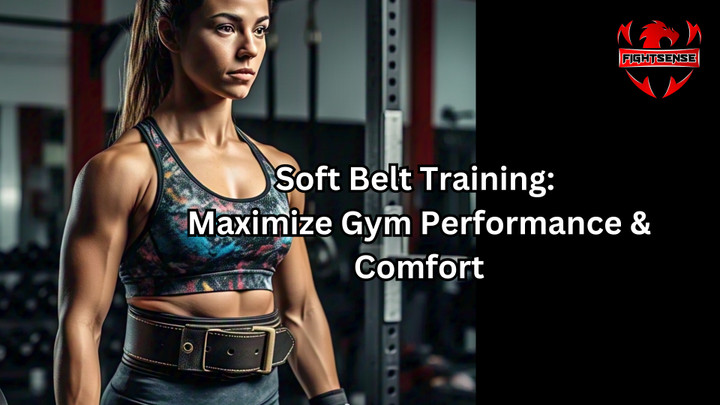Soft Belt Training: Maximize Gym Performance & Comfort
7th Mar 2025
Soft belt is an essential tool for weightlifting and strength training, offering support and stability to enhance performance and reduce injury risk. Unlike rigid powerlifting belts, a soft belt provides flexibility while still delivering crucial core stabilization.
Widely used in functional fitness, CrossFit, and strongman training, it helps lifters push harder and train longer without sacrificing mobility, no matter their experience level.
Key Highlights:
-
While keeping flexibility, a soft belt offers essential support.
-
For bigger lifters, soft belts for obese guys provide a pleasant, custom fit.
-
Heavy lifting in dynamic surroundings calls for a high-quality soft belt.
-
Strategic use of a soft belt increases performance and helps to avoid injuries.
-
Select a premium, lightweight, Workout belt catering to your exercise requirements.
What is a soft belt?
It is designed for weightlifters, strongmen, and fitness fanatics needing stability and mobility. A flex belt is a lightweight, flexible support belt for the back. Training belt are ideal for dynamic workouts and endurance-based strength training because they offer necessary core support without limiting movement, unlike stiff powerlifting belts.
Why Use a Soft Belt in Gym Workouts?
1. Adaptive Core Support:
Unlike conventional weightlifting belts, a flex belt allows a full range of motion and stabilizes the core.
2. Designed for All Body Types:
Wider, more flexible designs in lite belts for obese guys help to reduce pain while also providing ideal support.
4. Versatile for Various Training Styles:
Core belts perform well throughout powerlifting, CrossFit, functional training, and endurance-based lifting without the heft of a stiff belt.
5. Injury Prevention & Posture Improvement:
Using a core belt helps maintain spinal alignment, reducing lower back stress during compound lifts.
Best Exercises for Using a Training belt:
-
Deadlifts & Squats: It offers abdominal and lower back compression for stability.
-
Functional Training: In kettlebell swings, sled pushes, and overhead carries, functional training improves safety.
-
Long Training Sessions: Long training sessions help increase endurance in high-rep exercises and help avoid tiredness.
How to Choose the Right Soft Belt?
-
Material Matters: Search for durable high-density foam, neoprene, or reinforced elastic.
-
Fit & Adjustability: Make sure Velcro or adjustable buckle closures fit snugly but comfortably.
-
Level of Support: A soft belt should provide additional lumbar support without restricting movement.
-
Breathability & Comfort: Choose an ergonomic and moisture-wicking design to help avoid irritation and overheating.
Important things to consider:
-
Wearing It Too Loose: Makes the core and lower back less able to be efficiently stabilized.
-
Over-Reliance on the Belt: Maintaining natural stability depends first on core strength.
-
Using It for Every Exercise: It works best for strongman-style motions and large compound lifts.
Shop Now !
Conclusion:
A soft belt revolutionizes the training experience for athletes seeking a balance between mobility, support, and comfort. Whether your preferred exercise style is general fitness, powerlifting, or weightlifting, effectively employing a flex belt will significantly increase your workout performance and help prevent injuries.
Disclaimer:
This blog offers broad ideas for general fitness. It should not substitute professional guidance. Before adding a brown belt to your exercise program, always ask a qualified trainer for direction to guarantee correct use and efficacy.
FAQs:
1. Are flex belts suitable for serious weightlifters?
Strongmen, CrossFit, and endurance lifting are perfect since they offer mobility-oriented support.
2. Are comfort belts for fat guys more comfortable than regular belts?
Indeed, they offer more width and flexibility without straying into the waist, so they fit better
3. Should beginners use a fit belt?
A fit belt can help beginners, but they should also concentrate on core development in line with its usage.
4. How often should I use a comfort belt?
Use it during heavy lifting sessions; yet, avoid overdependence to naturally develop your core.

